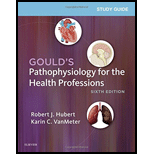
Concept explainers
To identify: The three ways in which the chemicals damage the cells in the body.
Introduction: Health is associated with the individual’s ability to adapt and manage physical, mental, and social challenges throughout life. The harmful chemicals affect the body’s defense system, which may cause damage or weaken the cells, tissues, and organs. These chemicals can get accumulated in the body and may be toxic and cause long-term health issues to the living beings.
Explanation of Solution
The unwanted chemicals may be consumed through contaminated food or water, inhaled into the lungs, or absorbed through the skin. It may accumulate in the body and cause health issues. Chemical sources have many types of hazardous materials, such as heavy metals, acid bases, inhalants (particulate or solvents), asbestos, and pesticides.
The three ways in which the chemicals damage the cells in the body are as follows:
- Chemicals damage the cell membrane and cause cell lysis.
- The chemicals interfere in the cellular
metabolic pathways of the cell and lead to cellular mutations. - The cellular mutation due to chemicals leads to cancer.
Want to see more full solutions like this?
Chapter 28 Solutions
Study Guide for Gould's Pathophysiology for the Health Professions
- what causes a variation in vital signs and how can we make adjustments?arrow_forwardAnalyze the traits that define a profession that nursing has attained?arrow_forwardHello, Can you help me please with the next case: Assessment (Recognizing Cues) Which client information is relevant? What client data is most important? Which client information is of immediate concern? Consider signs and symptoms, lab work, client statements, H & P, and others. Consider subjective and objective data. Analysis (Analyzing Cues) Which client conditions are consistent with the cues? Do the cues support a particular client condition? What cues are a cause for concern? What other information would help to establish the significance of a cue? Analysis (Prioritizing Hypotheses) What explanations are most likely? What is the most serious explanation? What is the priority order for safe and effective care? In order of priority, identify the top 3 client conditions. Thank you in advnce!arrow_forward
- Adult Case 1: Day 2—Questions 1. Write the Day 2 PN bag using a 2-in-1 formulation. 2. Would you increase dextrose to goal? 3. Would you add/continue ILE on Day 2? Why or why not? If so, what amount? 4. Assess and determine electrolyte additives. Assess calcium–phosphate compatibility. 5. What other additives would you include in the Day 2 PN? 6. Are there any additional interventions you would make? 7. What follow-up laboratory test results might be important to obtain for tomorrow morning?arrow_forwardAnalyze the traits that define a profession that nursing has attained?arrow_forwardEvaluate ways nursing has failed to attain its status as a profession?arrow_forward
- Discuss the difference between an occupation and a profession?arrow_forward1. Write goal PN macronutrients using a 2-in-1 formulation. 2. What consideration for amino acid concentration needs to be assessed? 3. Would you start this patient on goal dextrose for Day 1? 4. Would you add ILE on Day 1? Why or why not? If so, what amount? 5. Assess and determine electrolyte additives. Assess calcium–phosphate compatibility. 6. What other additives would you include in the Day 1 PN?arrow_forwardWhat impact do regulatory and accreditation standards have on the risk management process within health care organizations? Why do you think it’s important to understand how regulatory and accreditation standards affect risk management? Provide examples.arrow_forward
- you are a school nurse. in the last2 weeks, 9 cases of head lice have been reported in four different classrooms. The potential for spread is high, and both parents and teachers are growing anxious. compose a memo for distribution to the teachers. your goals are to inform, reassure, and direct future inqueries.arrow_forwardasked but not answers yet Language of Medicine 13th edition chapter 1 sections A-E exercise with answers onlyarrow_forwardwhat are the different types of assessments in the nursing process and when are they performed?arrow_forward
 Phlebotomy EssentialsNursingISBN:9781451194524Author:Ruth McCall, Cathee M. Tankersley MT(ASCP)Publisher:JONES+BARTLETT PUBLISHERS, INC.
Phlebotomy EssentialsNursingISBN:9781451194524Author:Ruth McCall, Cathee M. Tankersley MT(ASCP)Publisher:JONES+BARTLETT PUBLISHERS, INC. Gould's Pathophysiology for the Health Profession...NursingISBN:9780323414425Author:Robert J Hubert BSPublisher:Saunders
Gould's Pathophysiology for the Health Profession...NursingISBN:9780323414425Author:Robert J Hubert BSPublisher:Saunders Fundamentals Of NursingNursingISBN:9781496362179Author:Taylor, Carol (carol R.), LYNN, Pamela (pamela Barbara), Bartlett, Jennifer L.Publisher:Wolters Kluwer,
Fundamentals Of NursingNursingISBN:9781496362179Author:Taylor, Carol (carol R.), LYNN, Pamela (pamela Barbara), Bartlett, Jennifer L.Publisher:Wolters Kluwer, Fundamentals of Nursing, 9eNursingISBN:9780323327404Author:Patricia A. Potter RN MSN PhD FAAN, Anne Griffin Perry RN EdD FAAN, Patricia Stockert RN BSN MS PhD, Amy Hall RN BSN MS PhD CNEPublisher:Elsevier Science
Fundamentals of Nursing, 9eNursingISBN:9780323327404Author:Patricia A. Potter RN MSN PhD FAAN, Anne Griffin Perry RN EdD FAAN, Patricia Stockert RN BSN MS PhD, Amy Hall RN BSN MS PhD CNEPublisher:Elsevier Science Study Guide for Gould's Pathophysiology for the H...NursingISBN:9780323414142Author:Hubert BS, Robert J; VanMeter PhD, Karin C.Publisher:Saunders
Study Guide for Gould's Pathophysiology for the H...NursingISBN:9780323414142Author:Hubert BS, Robert J; VanMeter PhD, Karin C.Publisher:Saunders Issues and Ethics in the Helping Professions (Min...NursingISBN:9781337406291Author:Gerald Corey, Marianne Schneider Corey, Cindy CoreyPublisher:Cengage Learning
Issues and Ethics in the Helping Professions (Min...NursingISBN:9781337406291Author:Gerald Corey, Marianne Schneider Corey, Cindy CoreyPublisher:Cengage Learning





